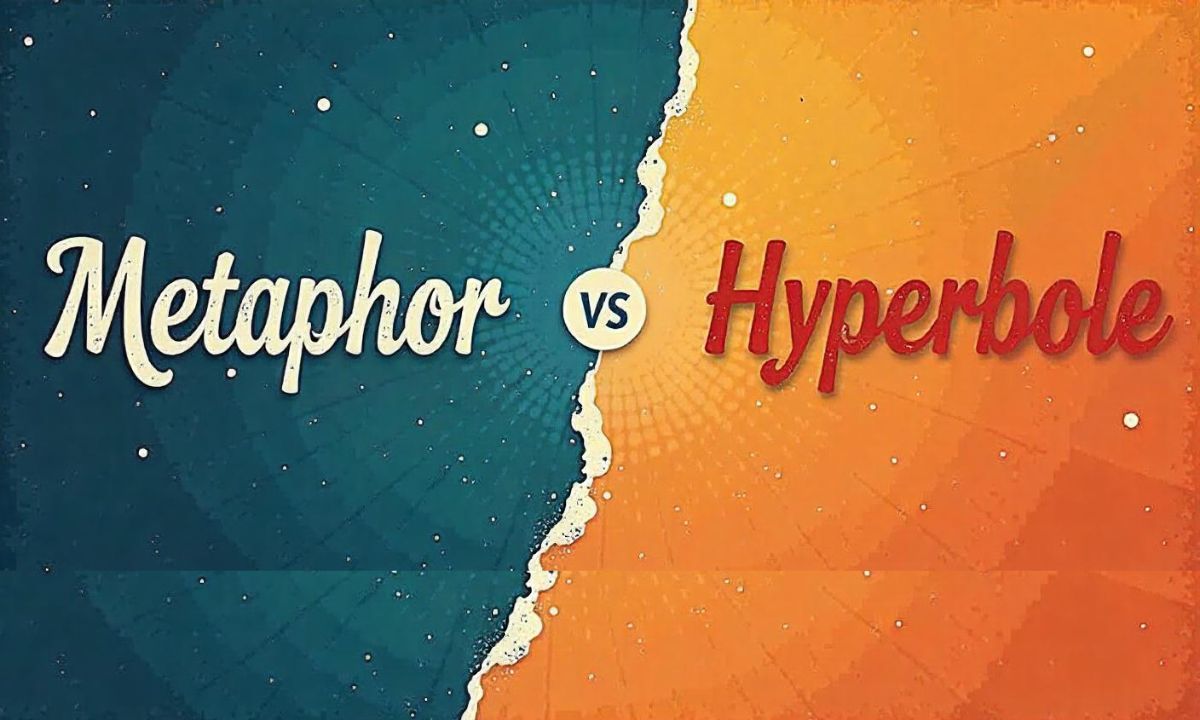Language is a remarkable canvas where words paint more than just literal meaning. Among the most vibrant techniques in our linguistic palette are metaphors and hyperboles – two powerful figures of speech that transform ordinary communication into extraordinary expression. Imagine language as a living, breathing entity that can stretch, bend, and leap beyond its conventional boundaries.
These linguistic devices aren’t just grammatical tricks; they’re the secret weapons of effective communicators, writers, and storytellers.
What is a Metaphor?
A metaphor is a sophisticated language expression that creates a direct comparison between two seemingly unrelated things, suggesting they share essential characteristics.
Unlike a simile, which uses “like” or “as,” a metaphor boldly declares one thing is another. It’s not about literal equivalence, but about revealing deeper, more nuanced understanding.
The Anatomy of a Metaphor
| Metaphor Component | Description | Example |
| Source Domain | The original concept being described | Life |
| Target Domain | The concept being compared | Roller Coaster |
| Comparative Element | The shared characteristic | Unpredictability and excitement |
Scenario Example of a Metaphor
Consider the classic metaphor: “Life is a roller coaster.” In this simple statement, we’ve transformed an abstract concept into a vivid, tangible experience.
Suddenly, life isn’t just a series of events, but a thrilling, unpredictable journey with steep climbs, sudden drops, and moments of breathtaking suspension.
What is Hyperbole?
Hyperbole is an exaggerated statement used not to deceive, but to emphasize emotion or create dramatic effect. It’s the linguistic equivalent of using a megaphone when a normal voice would suffice.
Hyperboles are intentionally over-the-top, designed to provoke reaction, humor, or intense emotional response.
The Power of Exaggeration
Hyperboles work because they tap into our emotional understanding. When someone says, “I’m so hungry I could eat a horse,” we don’t expect them to literally consume an entire equine creature. Instead, we immediately grasp the intensity of their hunger.
Scenario Example of a Hyperbole
“I’ve been waiting for this package for centuries!” translates to: “I’m extremely impatient and excited about this delivery.” The exaggeration communicates emotion more powerfully than a bland “I’m looking forward to my package.”
Hyperbole vs Metaphor: Key Differences
While both are figurative language techniques, they serve distinct purposes:
- Metaphors create understanding through comparison
- Hyperboles amplify emotions through exaggeration
- Metaphors are subtle and nuanced
- Hyperboles are bold and dramatic
Metaphor and Hyperbole in Literature
Great writers have long leveraged these techniques:
- William Shakespeare frequently used metaphors: “All the world’s a stage”
- Mark Twain was a master of hyperbole: “I was born modest; and if I had my way I should have died so.”
How to Use Metaphors in Everyday Communication
Metaphors can transform mundane conversations into memorable exchanges. They help explain complex ideas by bridging unfamiliar concepts with familiar experiences.
Email Example with a Metaphor
“Our team is a well-oiled machine, efficiently moving forward with our project goals.”
How to Use Hyperbole in Everyday Communication
Hyperboles add color, humor, and emotional depth to our interactions. They’re particularly effective in casual conversations, storytelling, and comedic contexts.
Text Message Example with Hyperbole
“I’ve been studying forever! My brain is literally melting from information overload!”
Why Do We Use Hyperbole and Metaphor?
Why Use a Metaphor?
- Simplify complex ideas
- Create vivid imagery
- Enhance understanding
- Add depth to communication
Why Use Hyperbole?
- Add emotional emphasis
- Create humor
- Make statements memorable
- Express intense feelings
Conclusion: The Art of Linguistic Creativity
Metaphors and hyperboles are more than just linguistic techniques—they’re windows into human creativity. They reveal our capacity to transform language from a mere communication tool into an art form that connects, entertains, and enlightens.
By understanding and skillfully employing these powerful devices, we can elevate our communication, making every conversation a potential masterpiece of expression.

